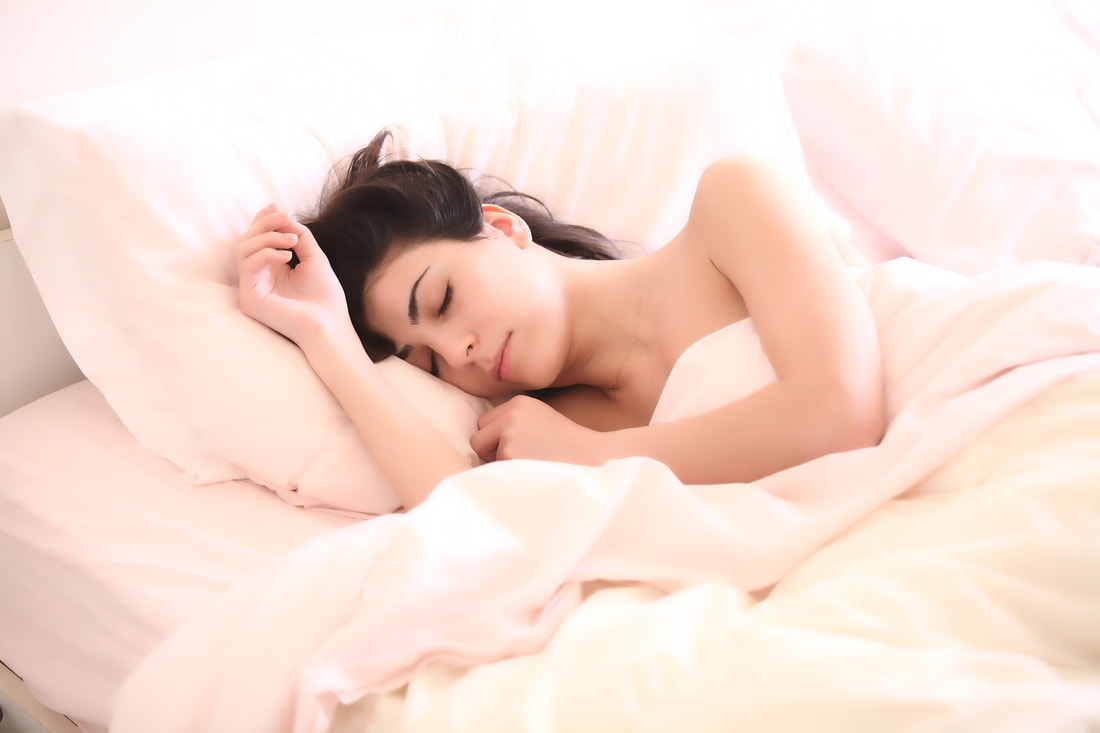|
Do you have trouble falling asleep and staying asleep? Read this curated guest post to learn some great tips on how you can get a good nights rest. Sleeping is one of the easiest things to do, so why can it be so difficult to fall asleep and then stay asleep? Personally, I have fought with insomnia in different periods of my life. The problem was always clearly related to stress and having too many worries, but the underlying reasons and possible solutions differ from person to person. Here’s what some of the experts say: ALESSA CARIDI – JOBUFIT Walk it out We spend SO much of our work days sitting only to come home, cook dinner, eat dinner sitting down, and then catch up on our favorite TV series sitting down. Get where I am going with this? This seated statue feeling doesn’t help me go to sleep. In fact, it does the opposite, I’m not tired at all when it comes to my bedtime. So, I plan some light movement before I head to bed. Not a traditional workout, but some light housekeeping. I tidy of the living room, maybe fold a basket of laundry (standing up), and I clean the kitchen / load the dishwasher. This movement, combined with the time of the evening, allow my body to feel tired and really look forward to climbing into bed. CINDY PERLIN – ALTERNATIVE PAIN TREATMENT DIRECTORY Do some gentle range of movement exercises and stretches before you get into bed. One of the contributors to difficulty falling asleep and waking in the middle of the night is trigger point pain. A trigger point is a hyper irritable spot, a nodule in a taut band of skeletal muscle, that causes pain, often in an area distant from the spot. Emotional stress, overexertion and inactivity all activate trigger points and the pain can be severe. If you’ve been immobile for too long, either before you go to bed, or during sleep, the inactivity can cause trigger point activation and pain. Move your head and neck through a full range of slow motions, rotate your arms backwards and forwards, make bicycling movements with your legs while lying down, rotate your feet and ankles and move them back and forth, twist your upper body from one side to the other and so forth, making sure to do the movements slowly and gently. These and similar movements will reduce the chance that trigger point pain will keep you from falling asleep or staying asleep. ELISE MARIE COLLINS Good sleep starts at sunrise Get out early to get light on your eyes. The sun resets your biological clock so that you feel sleepy at night and alert in the morning. Daylight wakes you up your physiology by halting melatonin production. LOREN FISHMAN – SCIATICA.ORG Get the clock out of sight The commonest form of insomnia is the worry: “It’s so late. If I don’t get to sleep right now I’ll be a wreck tomorrow,” which makes the worrier so anxious that she/he looks at the clock, worries even more, is less able to relax, and lo, it’s even later than it was before. This, naturally, brings about another time check. Intervene on this vicious cycle by taking the clock out of the recurrent equation. ROBERT HERBST – W8LIFTERUSA.COM The inability to fall asleep is often in one’s head and becomes a self-fulfilling prophecy. People tell themselves they have trouble falling asleep and then they start dreading going to bed and when they get there, expect not to fall asleep. It’s like when say they can’t sleep on airplanes and then immediately turn on a movie when they get to their seat. Through years of necessity, I have told myself that I can sleep anywhere-planes, trains, and automobiles-and I take advantage of the quiet time. I have gotten off a long flight from New York to Australia fresh and ready to go. So when one gets into bed, they should just know that they are going to fall asleep and relax. RHODA CLIMENHAGA – YO1 Work at Sunrise, Rest at Sunset As the sun rises, the Qi and blood in our bodies move from the inner organs to the exterior channels to facilitate activity. As the sun goes down, specifically between 11 p.m. – 3 a.m., the Qi and blood return to the organs. If you are not resting during this time, these organs will not be able to do their job and you will, at the very least, feel sluggish the next day. DOMINIQUE HODGIN – DR. SEARS WELLNESS INSTITUTE Read for at least 5-10 minutes before bed Reading has been proven to lower cortisol levels. It helps to calm your mind and body at bedtime. There is something about relaxing and enjoying written words, especially ones of encouragement or humor, which sets the stage for sleep. Just make sure what you are reading is lulling and not over-stimulating, like a murder mystery or work emails. It is also preferable to keep your reading off a back-lit screen — or at least use a blue light blocking app or glasses. MARTIN REED – INSOMNIA COACH Always get out of bed at the same time every day Getting out of bed by the same time every day strengthens the sleep/wake cycle and ensures that adequate sleep pressure builds during the day. Over time, this will make it easier to fall asleep at night and improve sleep quality.
0 Comments
Leave a Reply. |












 RSS Feed
RSS Feed
